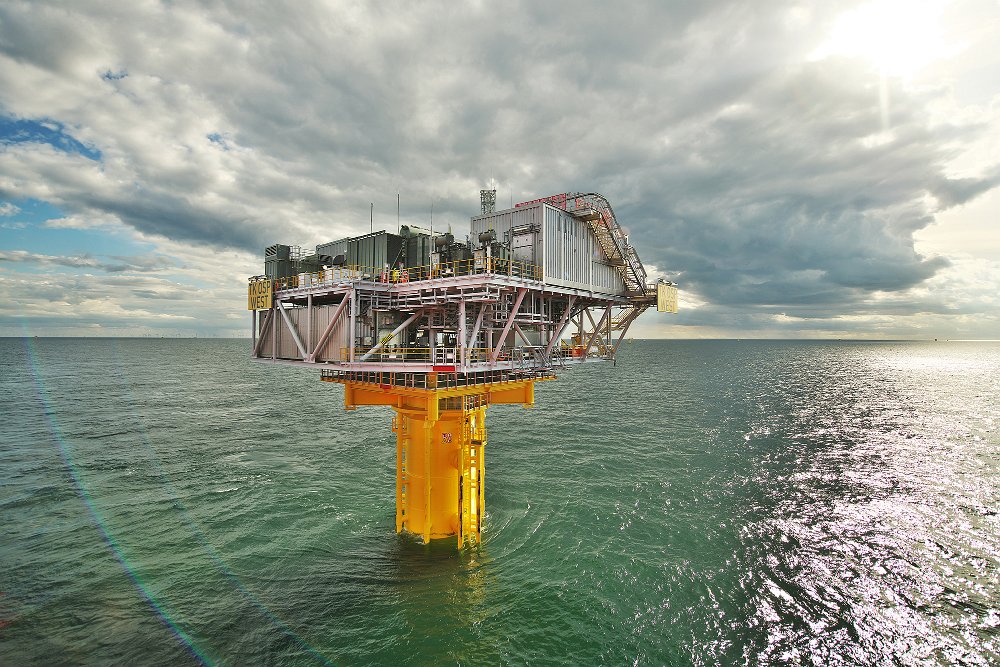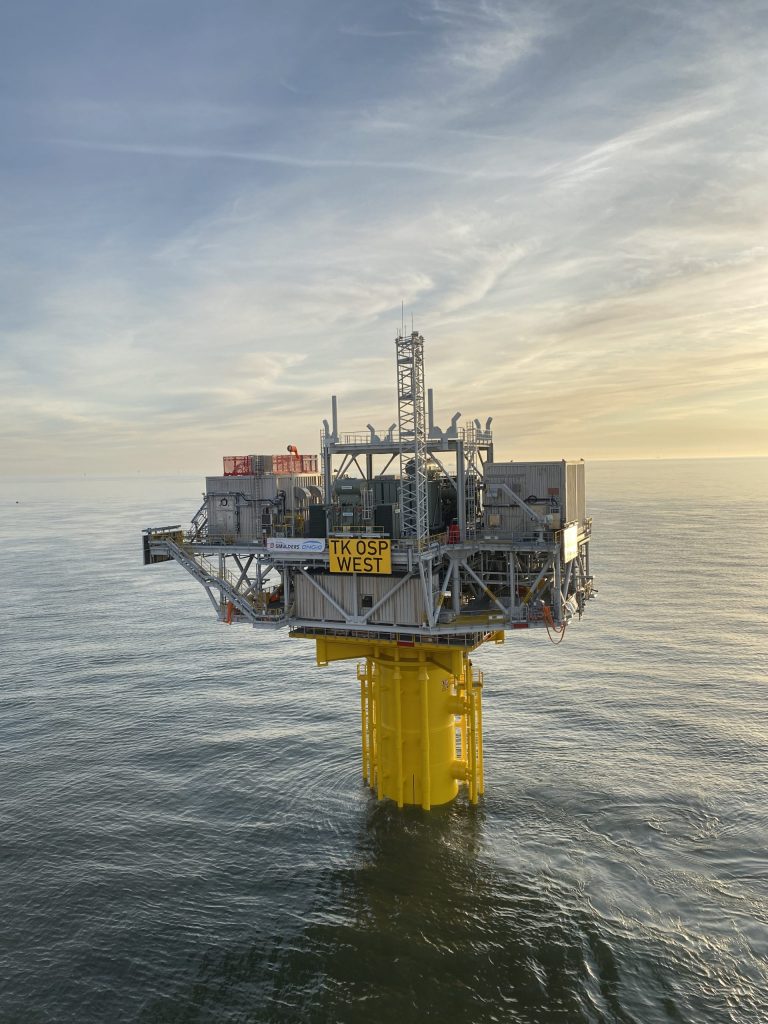Overview
They were designed by Triton Knoll’s contractor Siemens Energy Limited, and are central to offshore electrical system.
The two OSPs, East and West, will each receive electricity generated by the wind farm’s powerful 90 x MHI Vestas v164-9.5 MW turbines, before converting it for transfer to the landfall connection via two huge export cables due to be installed this summer.
British firms JGC in Scotland, Smulders at Wallsend, and Granada Material Handling in Manchester have been important to the design and construction of key components for the OSPs.
- The OSPS were fabricated and fitted out in Belgium by Smulders and Engie/Fabricom.
- Each OSP weighs 1,200 tonnes, the structure is 21 metres tall (a maximum 41 metres above sea level) and covers an area of 560 m2.
- Both OSPs will be installed on a monopile foundation, of which some 16 metres is below sea level, and specialised transition piece.
- Each of the two transition pieces are around 22m high, 6.5m to 7.1m in diameter, and weighs around 580 tonnes.
- Both transition pieces were manufactured and assembled in Wallsend, UK, by Smulders.
Principal Contractor: Siemens Energy Ltd
Expected completion: by Q4 2020
Progress Updates

Triton Knoll’s two offshore substations (OSPS) have been successfully installed and energised. OSP West was successfully installed in April 2020 closely followed by OSP East in May 2020. The OSPs were installed by Subsea 7’s heavy lift vessel Seaway Strashnov. The structures were fabricated by Smulders, in partnership with Fabricom at their Belgian facility near Antwerp, consisting of two specialist monopile foundations, transition pieces and cable decks. The transition pieces and cable decks were fully assembled and installed from Smulders’ Wallsend facility, located near Newcastle. Each OSP weighs 1,200 tonnes, the structure is 21 metres tall (a maximum 41 metres above sea level) and covers an area of 560 m2 and were designed by Triton Knoll’s Substations contractor, Siemens Energy.
Commissioning is now complete on both platforms ready to receive power. First generation from the offshore wind farm has now been achieved.
Triton Knoll has marked a significant milestone in its progress towards delivering critical new UK energy infrastructure, with the installation of the first of two offshore substation platforms (OSPs).
Installation of OSP West was achieved on 12 April and installed by Subsea 7’s heavy lift vessel Seaway Strashnov. The structures are fabricated by Smulders, in partnership with Fabricom, and which consist of two specialist monopile foundations, transition pieces and cable decks. The transition pieces and cable decks were fully assembled and installed from Smulders’ Wallsend facility, located near Newcastle.
(Video: Two specialist transition pieces are assembled at Smulders' Wallsend facility, near Newcastle.)
Commissioning is now underway and is being carried out by the jack-up barge Neptune, operated by Deme, with the second OSP (OSP East) ready to be installed in late Spring 2020.
At the time of the installation of OSP East, Julian Garnsey, project director for Triton Knoll and innogy, said: “In the current climate, the delivery of this milestone has been a notable achievement. Our thanks go to everyone who contributed to the safe installation of this platform, which is testament to the commitment of the teams involved, all of whom are operating under tight control measures in line with the current UK Government guidance.”
At 1200 tonnes each, these platforms operate at the very heart of the offshore wind farm, and are part of the state-of-the-art electrical system that ultimately connects both the onshore and offshore assets into the national grid distribution network.
The two OSPs, East and West, each receive electricity generated by the wind farm’s powerful 90 x MHI Vestas v164-9.5 MW turbines, before converting it for transfer to the landfall connection via two huge export cables.


